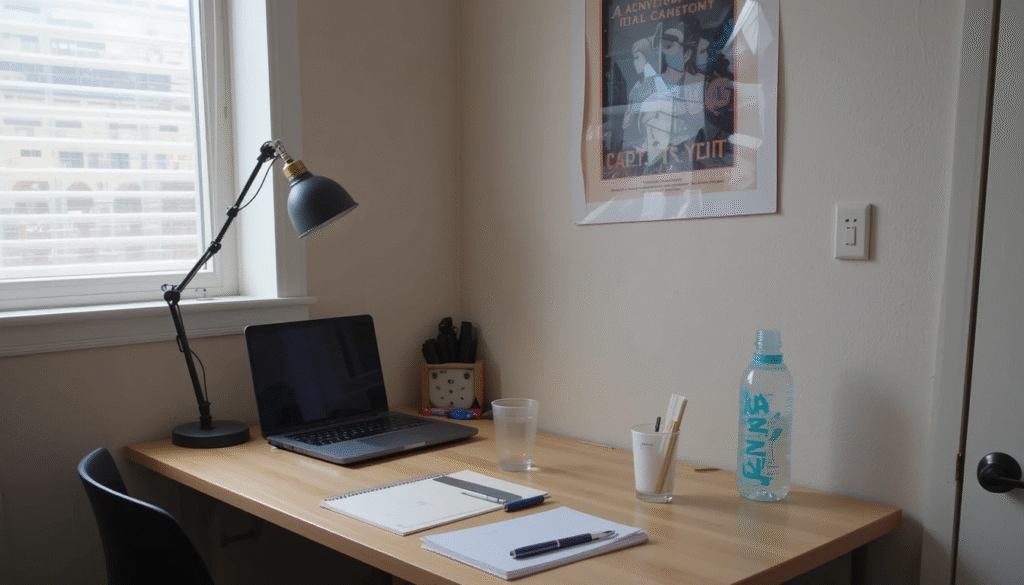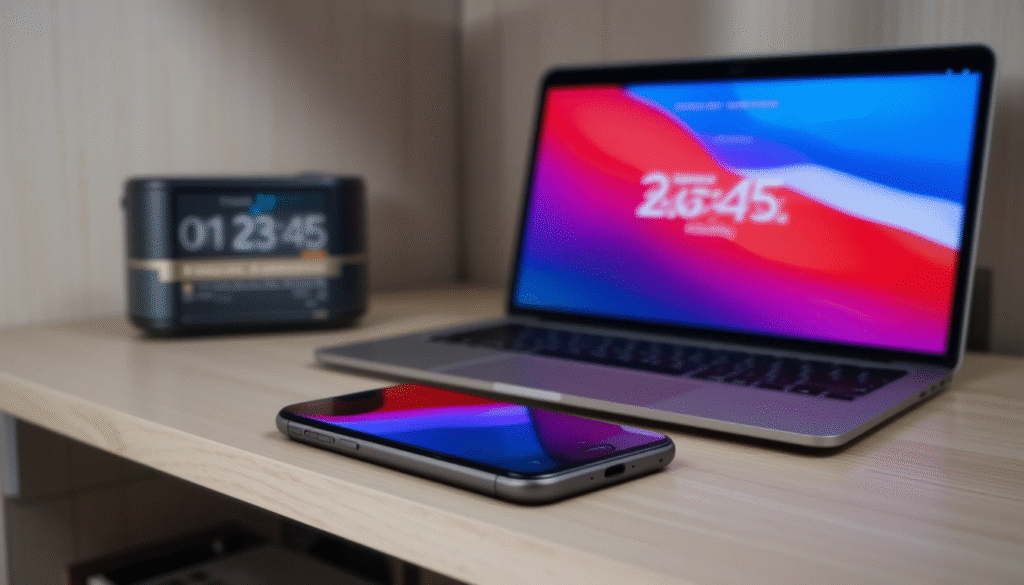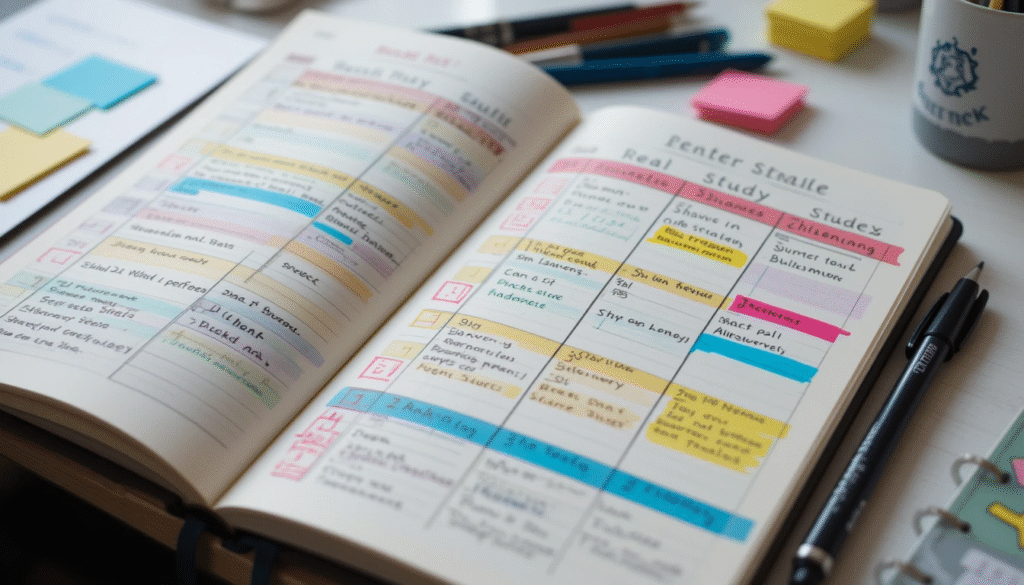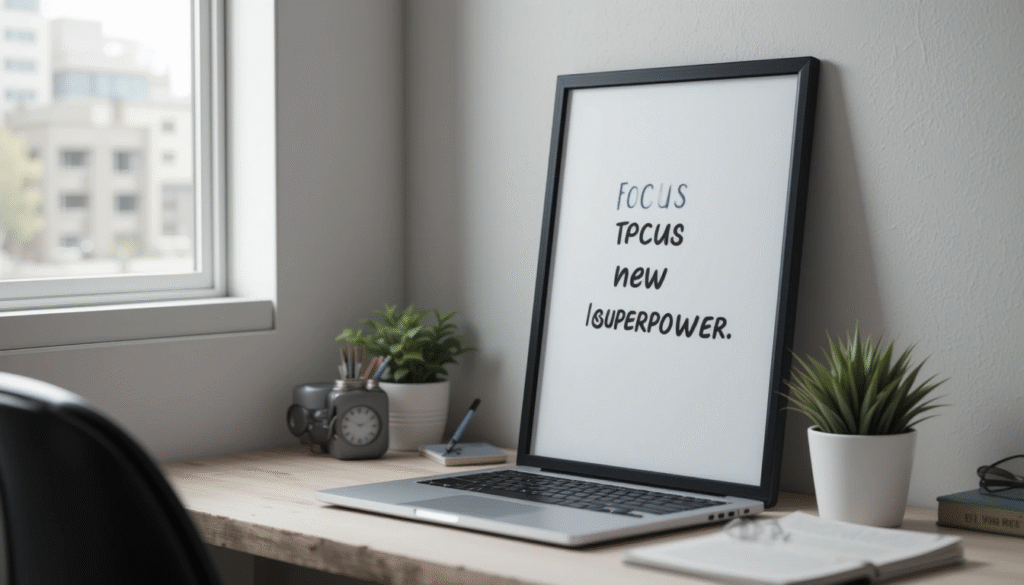Studying at home sounds like a dream — no long commutes, no noisy classmates, your own schedule. But it comes with its own monster: distractions.
From the constant buzzing of phones to family interruptions, YouTube rabbit holes, and the temptation to nap — studying at home requires serious discipline.
If you’re tired of wasting hours that feel productive but achieve little, this guide is for you. We’ll show you practical strategies to avoid distractions and finally get into your study groove — even if you’re stuck in your room.
📌 Why Home is a Double-Edged Sword for Studying
Home is comfortable. But that comfort often kills productivity.
Here are some common distractions at home:
- Smartphones and social media
- Family members or roommates
- TV, YouTube, Netflix
- Noise from outside or other rooms
- Household chores
- Lack of a structured routine
The key is to build a study environment and routine that protects your focus. Let’s dive into how you can do that.
🪑 1. Set Up a Dedicated Study Space
Why it matters: Your brain forms associations with physical spaces. If you study in bed, your brain may associate it with sleep.
How to create the perfect space:
- Choose a quiet, low-traffic area in your house
- Use a desk and ergonomic chair if possible
- Keep only study-related items in sight
- Use good lighting, ideally natural light
- Avoid studying on your bed or couch
You don’t need a fancy setup. Even a small corner can become your productivity zone if you use it consistently.

📵 2. Tame Your Smartphone
Your phone is the #1 distraction. Studies show students check their phones over 50 times a day.
Tips to control phone use:
- Use airplane mode or Do Not Disturb
- Put the phone in another room while studying
- Use focus apps like Forest, Focus@Will, or Cold Turkey
- Temporarily delete social media apps during exam season
- Use a study timer app (Pomodoro method) instead of your phone timer
Remember: your phone is a tool, not a toy — especially during study time.

🧠 3. Use the Pomodoro Technique
This method boosts focus while giving your brain enough rest.
How it works:
- Study for 25 minutes
- Take a 5-minute break
- Repeat 4 times, then take a 15-30 minute break
Why it works:
- Prevents burnout
- Makes studying less overwhelming
- Encourages deep focus
- Gives your brain a rhythm
Apps like Focus Keeper, Pomofocus, or Tide are great companions for this method.
🗒️ 4. Plan Your Study Sessions in Advance
When you don’t know what to study, you waste time deciding — or worse, procrastinate.
Do this instead:
- Create a weekly study plan on Sunday night
- Use planners or apps like Todoist, Notion, or Google Calendar
- Break large tasks into smaller chunks
- Assign each topic a time slot
Having a roadmap helps you stay accountable and cuts down decision fatigue.

🧏 5. Communicate With Your Household
One of the most common (but underestimated) distractions? Other people.
If you live with family or roommates, they may not realize when you need quiet.
How to manage this:
- Set clear study hours and share them
- Use a “Do Not Disturb” sign on your door
- Wear noise-canceling headphones
- Politely ask to avoid interruptions during key study times
- Compensate by spending time with them outside study hours
Boundaries are key. If you respect your time, others will too.

🔇 6. Eliminate Background Noise
If your home isn’t quiet, don’t panic — you can still create a bubble of focus.
Try these tools:
- White noise apps (like Noisli or Rainy Mood)
- Lo-fi study music on YouTube or Spotify
- Noise-canceling headphones
- Earplugs if you’re sensitive to sound
Sometimes, a bit of ambient noise is better than total silence — experiment and find your focus zone.
🧹 7. Declutter Your Environment
A messy space = a messy mind. Your eyes and brain get distracted by clutter.
Quick declutter checklist:
- Clear your desk of unrelated items
- Put books and notes away when not in use
- Keep water, pens, and notebooks within reach
- Make your space aesthetically pleasing (plants, lights, posters)
Clean space = clear focus. Simple as that.
🔁 8. Build a Daily Routine
The brain thrives on routine. When you study at the same time every day, your brain gets into “focus mode” automatically.
How to build it:
- Wake up and sleep at consistent times
- Include exercise and meals in your schedule
- Set study hours and break times
- Use habits stacks (e.g., “After breakfast, I review flashcards”)
Stick to it for a week — and you’ll notice massive improvements in discipline.
🛑 9. Avoid Multitasking
Multitasking = major distraction.
Watching videos while studying, switching tabs, replying to texts — all reduce retention and increase fatigue.
Focus on:
- One subject or task at a time
- Closing all unrelated tabs
- Turning off email or notification pings
- Keeping a sticky note: “Focus on one thing”
Give 100% attention to one task — you’ll finish faster and remember more.
🎯 10. Reward Yourself After Study Sessions
The brain loves rewards. They reinforce good habits.
Try:
- A 10-min social media break
- A favorite snack
- Watching an episode or YouTube video
- 5 minutes of stretching or walking
- Listening to a favorite song
Just make sure the reward doesn’t become a 3-hour break! Set boundaries.
✅ Quick Summary Table
| Tip | What It Solves |
|---|---|
| Dedicated Study Space | Avoids laziness and distractions |
| Phone Control | Prevents endless scrolling |
| Pomodoro Method | Boosts concentration |
| Pre-planned Study Sessions | Eliminates procrastination |
| Talk to Family | Reduces interruptions |
| Noise Solutions | Keeps environment quiet |
| Decluttering | Reduces visual distractions |
| Daily Routine | Trains your brain for focus |
| No Multitasking | Increases retention |
| Rewards | Builds motivation |

🔚 Final Thoughts: Focus is a Skill You Can Train
Distractions are normal. But how you respond to them makes all the difference.
Your study environment, habits, and mindset play a huge role in your ability to stay focused — especially at home.
Start with small changes. Try one tip at a time. Within a week, you’ll notice you’re not just studying more — but studying better.